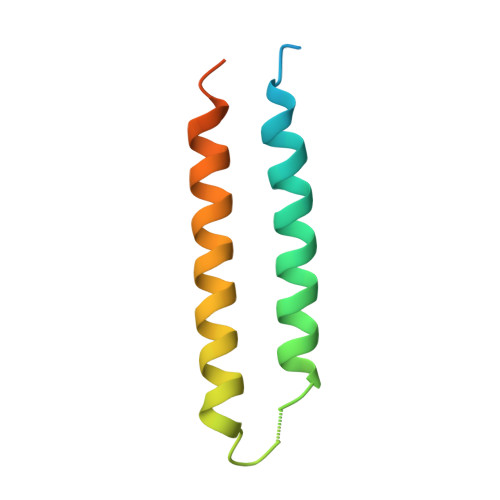MEK drives BRAF activation through allosteric control of KSR proteins.
Lavoie, H., Sahmi, M., Maisonneuve, P., Marullo, S.A., Thevakumaran, N., Jin, T., Kurinov, I., Sicheri, F., Therrien, M.(2018) Nature 554: 549-553
- PubMed: 29433126
- DOI: https://doi.org/10.1038/nature25478
- Primary Citation of Related Structures:
5VR3, 5VYK - PubMed Abstract:
RAF family kinases have prominent roles in cancer. Their activation is dependent on dimerization of their kinase domains, which has emerged as a hindrance for drug development. In mammals, RAF family kinases include three catalytically competent enzymes (ARAF, BRAF and CRAF) and two pseudokinases (KSR1 and KSR2) that have been described as scaffolds owing to their apparent ability to bridge RAF isoforms and their substrate, mitogen-activated protein kinase kinase (MEK). Kinase suppressor of Ras (KSR) pseudokinases were also shown to dimerize with kinase-competent RAFs to stimulate catalysis allosterically. Although GTP-bound RAS can modulate the dimerization of RAF isoforms by engaging their RAS-binding domains, KSR1 and KSR2 lack an RAS-binding domain and therefore the regulatory principles underlying their dimerization with other RAF family members remain unknown. Here we show that the selective heterodimerization of BRAF with KSR1 is specified by direct contacts between the amino-terminal regulatory regions of each protein, comprising in part a novel domain called BRS in BRAF and the coiled-coil-sterile α motif (CC-SAM) domain in KSR1. We also discovered that MEK binding to the kinase domain of KSR1 asymmetrically drives BRAF-KSR1 heterodimerization, resulting in the concomitant stimulation of BRAF catalytic activity towards free MEK molecules. These findings demonstrate that KSR-MEK complexes allosterically activate BRAF through the action of N-terminal regulatory region and kinase domain contacts and challenge the accepted role of KSR as a scaffold for MEK recruitment to RAF.
Organizational Affiliation:
Institute for Research in Immunology and Cancer Laboratory of Intracellular Signaling Université de Montréal C.P. 6128, Succursale Centre-Ville Montréal, Québec H3C 3J7, Canada.















